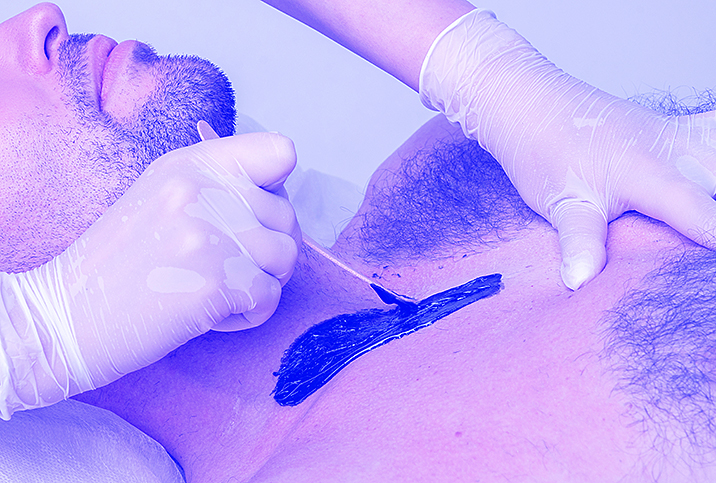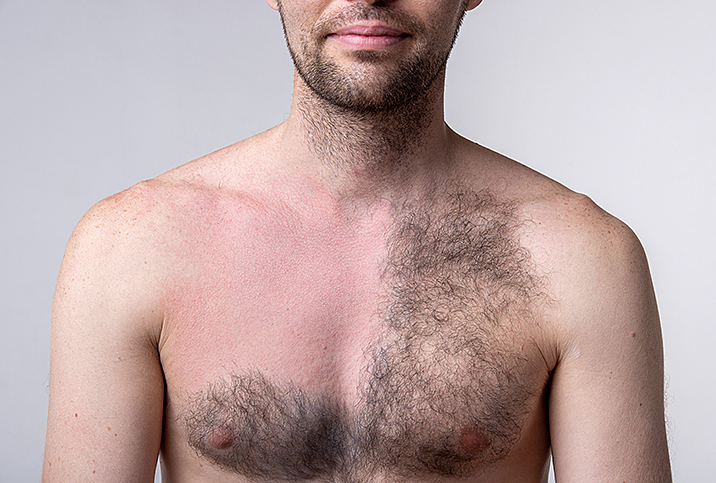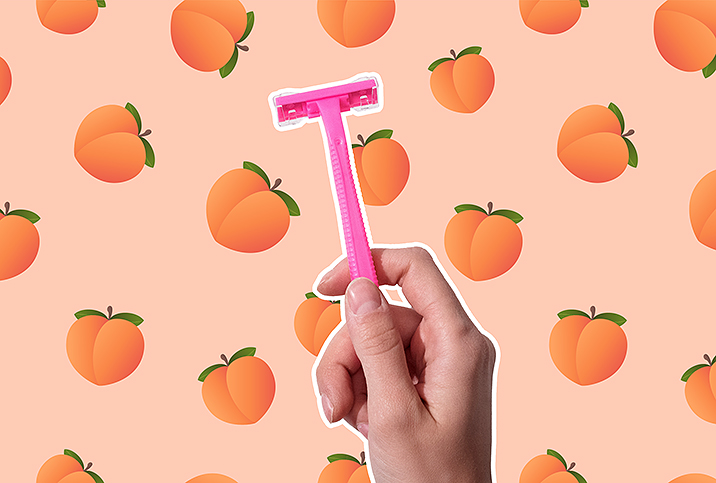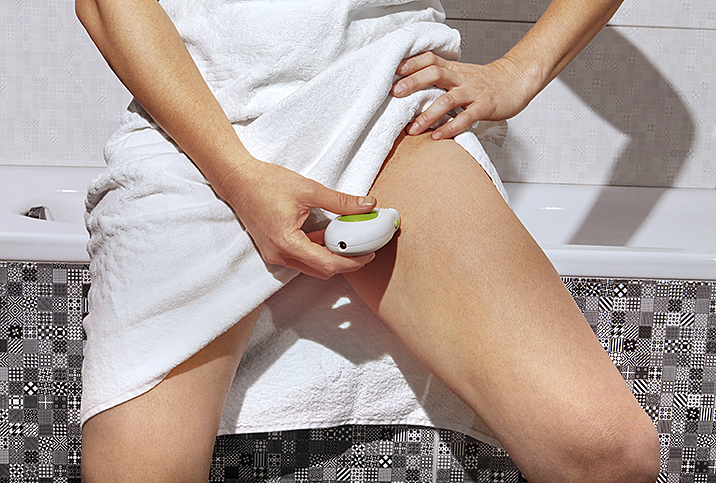10 Waxing Do's and Don'ts for Men

If you're looking for a typical approach to manscaping, the razor is king. But shaving, especially in intimate or hard-to-reach areas, can be risky business. Enter waxing. Though it's not exactly painless, it isn't necessarily torturous, either. Plus, results can last much longer than shaving and produce far less itchiness.
If you're interested in learning more about waxing, you're in the right place. Find out what wax to use, plus check out 10 do's and don'ts for a more effective, less agonizing experience.
Wax types
Put simply, the three main types of wax are soft, hard and sugar. All of them work by removing hair from the root, with results that last about four to six weeks.
Soft wax is also known as strip wax. Soft waxing involves spreading a thin layer of wax directly onto the skin. A cloth strip is then applied and pulled off to remove the hair. This type of wax should be used only once per session, as multiple strips in one go can cause injury. Soft wax is usually applied only to large areas, such as the arms or legs.
Hard wax is applied while warm and directly onto the skin. Once it cools and hardens, it's pulled off. Hard wax can be used multiple times per session without risking injury, as it only binds to the hair, not the skin. These waxes tend to be less painful and are better for smaller, more sensitive areas, such as the genitals and the face.
Sugar wax, which originated centuries ago in the Middle East, is one of the oldest and simplest formulas, typically consisting of sugar, lemon and hot water. Although it is a depilatory, it isn't technically a "wax."
"Waxes and sugar waxes are very similar, with the key difference that sugar wax is made from a sugar base rather than a synthetic one. Sugar wax is also gentler on the skin," said Rosie Khandwala, a wax therapist and the founder of the United Kingdom-based company Sugar Coated. "Both waxes and sugar waxes are epilators, meaning they remove the hair from the root, weakening growth over time, and require treatment less often."
Some salons also offer fruit or chocolate waxes. These work similarly to sugar and can likewise be used on small, sensitive body parts with minimal risk of skin irritation.
Do's
To make the waxing experience as pleasant as possible, follow all instructions that accompany the product. Some generalities can be helpful, too, so ensure you do what experts recommend.
Start with the easy stuff
"Practice on an area that is easiest to reach first," Khandwala said, mentioning the legs and arms as ideal spots. She also recommended starting with small patches to minimize discomfort while perfecting your technique.
She suggested asking a partner or friend for help when waxing hard-to-reach areas—except the genitals. Instead, she recommended seeking professional help to save yourself from a world of hurt.
"The male genitalia skin is loose and has a lot of nerve endings. This can lead to a lot of pain if not done professionally," Khandwala said.
Prepare the skin
Adarsh Mudgil, M.D., the owner of Mudgil Dermatology in New York City, said less is more for pre-waxing preparation, especially as some products can make the skin more susceptible to irritation. However, some prep is necessary. For waxing at home, Khandwala recommended using talc powder, which absorbs the skin's natural oils, making it easier for the wax to attach to the hairs and extract them at the root. Baby powder works, too.
Exfoliating with a weekly scrub, brush or face mask between waxes can also be beneficial. This removes dead skin cells to create a clean, smooth surface, making waxing easier and reducing the risk of ingrown hairs.
Pull against the growth
When waxing at home, apply the product in the direction of the hair growth. However, when pulling, go in the opposite direction. This ensures the hair comes out at the root and minimizes the risk of superficial breakage and ingrown hairs.
Practice good aftercare
Although waxing won't cause razor burn, some discomfort isn't uncommon. Khandwala recommended using witch hazel to soothe any itching and burning, followed by moisturizing with rosehip oil or aloe vera.
"Good moisturizers with ceramides can also help soothe the area," said Beth Goldstein, M.D., a dermatologist based in Durham, North Carolina, and the founder of Central Dermatology Center and Get Mr., a developer of skincare products for men. "Cicalfate cream can help promote healing and can reduce risks of infection."
If you know your skin is sensitive, Mudgil advised asking a dermatologist for a low-potency topical steroid, which can be applied immediately after hair removal to minimize irritation.
He also stressed the importance of protecting waxed skin from the sun, because it will be more susceptible to burning.
Vet your salon
"Research salons thoroughly. Look for ones that offer a range of options for different skin types," Khandwala said, adding that professional wax therapists conduct consultations to discuss the client's goals, skincare habits and medical details, and perform evaluations before the first session. Based on this information, they determine the best product for the desired area and perform a patch test to ensure there's no allergic reaction.
Cleanliness is also crucial, Mudgil said. A salon or spa that doesn't practice proper hygiene could leave you vulnerable to bacterial infections.
Once you find a salon you like, keep up with appointments. Over time, maintaining a regular waxing routine will cause hair to grow back slower and thinner as the follicles weaken.
Don'ts
Sounds easy enough so far, right? Well, doing some steps correctly but others incorrectly won't do you much good. Make sure you avoid the easy-to-commit don'ts.
Don't wax long hair
If hair is too short, the wax might not be able to grasp it well enough for extraction. However, hair that's too long can be more painful to remove. This is especially true if you're doing it at home, as professionals are trained to work with clients who have gone au naturel for a while. Experts recommend growing hair between 1/4 inch and 1 inch for optimal waxing success. It's also best to let the hair grow for at least five days between waxing sessions. If you need to trim beforehand, use shaving scissors.
Don't shave between wax appointments
Although it's a myth that shaving makes hair grow back thicker, it can ultimately undermine the efficacy of waxing, according to Mudgil.
One of the benefits of waxing is that it weakens the hair follicle over time, making the hair thinner and easier to extract at the root. If you shave between appointments and wax less frequently, it will take longer for this process to happen. In the meantime, denser, tougher follicles create more time-consuming and uncomfortable waxing sessions.
Shaving also carries the risk of ingrown hairs, razor burn and nicks.
Don't tan or use retinoids/retinol immediately before waxing
"Avoiding any topical retinoids/retinol is key, as they increase skin sensitivity," Mudgil said.
Using exfoliants, including retinoids/retinol and glycolic acid, within 24 hours of waxing can cause significant wounds, Goldstein said, particularly if hot wax is used.
Likewise, avoid tanning for 24 to 48 hours before waxing, because doing so can make the skin more sensitive and increase the likelihood of discomfort or burns.
Don't wax if you have warts or an infection
"If someone has warts on their legs, face [flat warts] or groin, then any type of micro-wounds created by waxing, shaving or laser can result in spreading of warts," Goldstein said. "Any type of infection, including fungal, bacterial [staph/impetigo] or viral, including cold sores [herpes] or warts, can more likely spread, as well."
Don't touch or scratch freshly waxed skin
Don't touch or, worse, scratch the waxed area. Scratching can exacerbate discomfort and transfer bacteria, which may clog pores and cause ingrown hairs or infection. Avoid any strenuous activity, including sex or exercise, and hot showers or saunas, because sweat can cause irritation and increase the risk of clogged pores.
There you have it. Following these waxing guidelines should help you get the look and feel you want for your manscape.


















